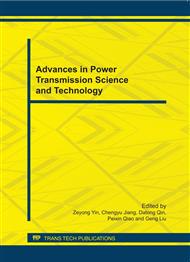p.527
p.531
p.535
p.539
p.543
p.547
p.552
p.556
p.562
Adaptive Impulse Controller Design of Harmonic Drives System with Friction
Abstract:
The friction model with the effects of friction and transmission flexibility of harmonic drives system is used for adaptive impulse control design in precision control system. Experimental response based on a new pulse shape which is consisted of two harmonic expansions is studied, the first harmonic is the main pulse to drive the arm to move a displacement, the second harmonic has two functions: it enforces the main harmonic pulse in its first half that will help it to eliminate the dead zone, and provides a minus pulse in its second half to stop the arm motion quickly. An adaptive impulse feedback controller is developed based on it. Simulation and experiments show the effectiveness of the proposed controller, robustness of dead zone elimination to friction variation can be guaranteed.
Info:
Periodical:
Pages:
543-546
Citation:
Online since:
August 2011
Authors:
Price:
Сopyright:
© 2011 Trans Tech Publications Ltd. All Rights Reserved
Share:
Citation:


